Can Plants be Carnivores?
Written by Sthitee Mohanty, senior writer.
These carnivorous plants ‘hunt’ down their prey by using ingenious traps and pitfalls.
We associate the word carnivorous with meat eating animals – but, here’s an interesting question: Can plants be carnivores? (Carnivore typically means: “an animal that feeds on other animals”)
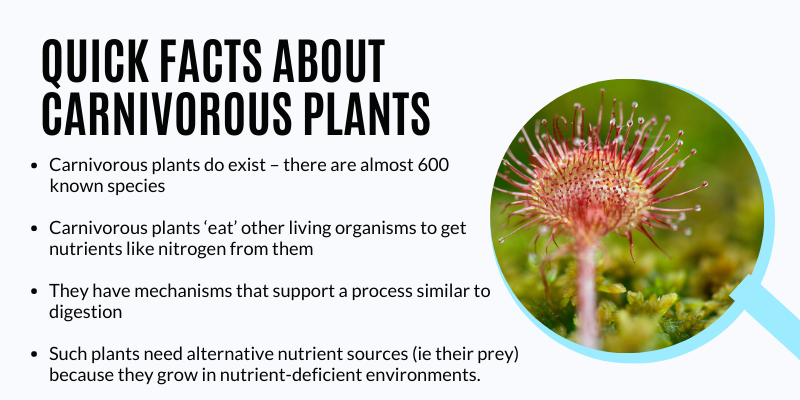
We know plants as independent living organisms that make their own food with the help of sunlight, carbon dioxide, and a chemical called chlorophyll.
But, here’s the thing – plants can be carnivores! There exist predatory flowering plants that kill other living organisms for nutrients.
More about carnivorous plants
Carnivorous plants have three specific attributes: they capture and kill prey; they can digest this prey; they assimilate nutrients from this digestion – they take up nutrients they need to survive
It is not necessary for these plants to kill prey. Getting nutrients from such prey gives them an extra boost in growth and reproduction.
Some carnivorous plants do consume insects especially but most consume whatever living plants they can. They also “eat” organisms like lizards, mice, rats, insects, spiders, crustaceans, and other small soil and water-living invertebrates and protozoans.
How do plants “kill”?

These carnivorous plants ‘hunt’ down their prey by using ingenious traps and pitfalls.
Some examples of these carnivorous plants are venus flytraps, pitcher plants, sundew plants, monkey cups, butterworths, bladderworts, etc.

Where are carnivorous plants found?
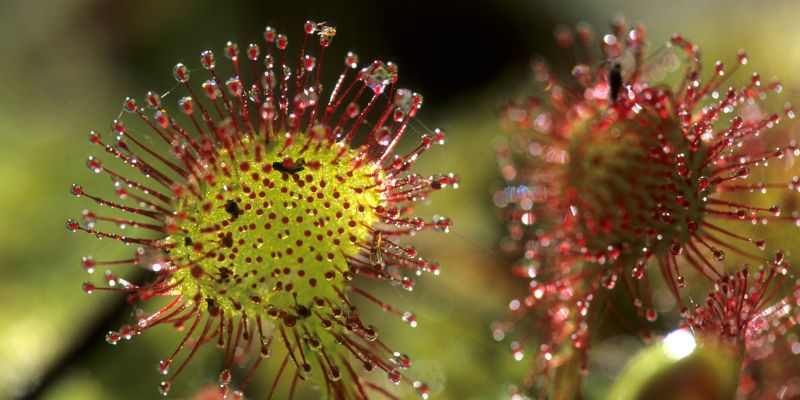
Carnivorous plants can be either aquatic or terrestrial – meaning they can either live in water or on land. The majority of carnivorous plants grow in bogs and swamps or sandy tropical regions.
In such habitats, the soil is deficient in air and minerals like nitrogen and phosphorus. The soil can also be dry and acidic.
Venus flytraps are commonly found in the U.S.A. So are sundews!
Pitcher plants can be found in SE Asia and Australia. Bladderworts are found in swampy areas of the Northern Hemisphere. Butterworts too are native to the Northern Hemisphere.
Did you know that India has pitcher plants in the state of Meghalaya?
Why do these plant species turn carnivorous?
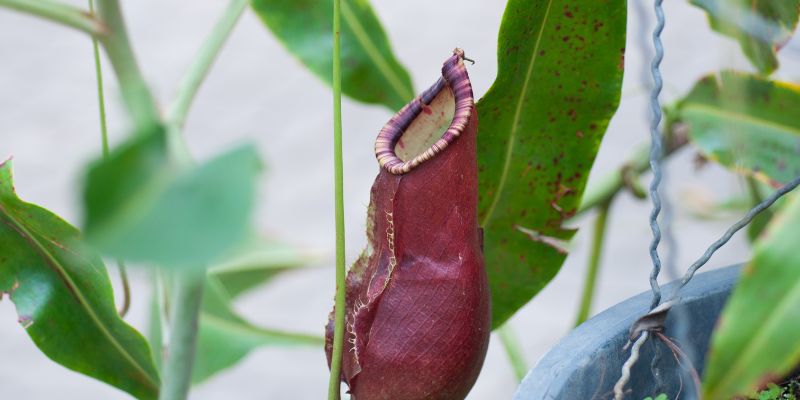
Most carnivorous plants grow in habitats with poor-quality soil. This soil is deficient in nitrogen and at times phosphorus, both crucial nutrients for plants.
These plants’ ancestors had to figure out alternative sources of nitrogen. One way was consuming small living prey like insects. After years of evolution, these plants have now become carnivorous.
Insects and other small organisms are packed with protein that these plants need.
Carnivorous plants digest their prey by using enzymes or bacteria to break them down into smaller nutrients they can use. The process is not exactly the digestive process that occurs in animals but it is analogous – similar in certain aspects.
Why do plants need nitrogen?
- Nitrogen is a necessary component of chlorophyll
- Nitrogen is used to make amino acids which are further used to make proteins
- Nitrogen plays an active role in the health of plant cells
Why are carnivorous plants still considered plants?
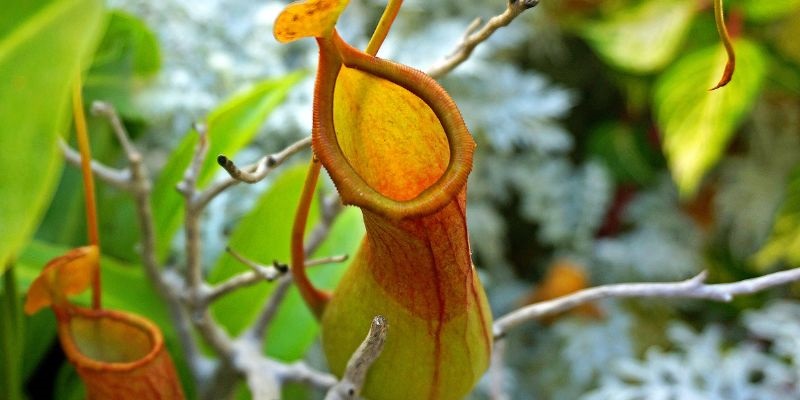
If these plants eat prey, why are they not considered animals?
Well, they need more than what their tiny prey can give them! Carnivorous plants are partial heterotrophs – (a heterotroph is living thing that can’t make its own food supply, so it eats other things, like plants or other animals), to survive they must consume prey and photosynthesize to survive.
What is photosynthesis?
Photosynthesis is a process that occurs in every green plant. It’s the process by which plants use sunlight, water, and carbon dioxide to create oxygen and energy
How are carnivorous plants different from other plants?
| Carnivorous Plant | Normal Plant |
| A partial heterotroph – it depends half on photosynthesis for survival and half on the prey it digests for nutrients | Complete Autotroph – it depends entirely on the process of photosynthesis for nutrients |
| They grow mostly in nitrogen-deficient soil | Their soil is often not deficient in nitrogen |
| It has evolved specific mechanisms to trap prey | It has not evolved in such a way |
How do carnivorous plants attract their prey?
It’s not like carnivorous plants have fangs and claws to catch their prey. They have their own special tricks to ‘hunt’!
They use a lot of specialized leaf structures to attract and trap prey. Bright colors and more nectar attract a lot of insects.
Even hairs on the plant body and leaf extensions attract prey. Most carnivorous plants do not use flowers to attract prey.
How do carnivorous plants trap their prey?

All carnivorous plants use modified leaf structures to form a trap. These leaf mechanisms can be active (they exhibit some visible motion) or passive (they do not exhibit visible motion).
Pitcher plants have pitfall traps. Pitfall traps are passive traps. The prey enters the pitcher-shaped leaf, gets trapped in the liquid within, and is slowly digested by the plant.
Venus flytraps have active snap traps. The modified leaf structures ‘snap close’ on the prey when it sits on/near the surface.
Sundews and butterworts use sticky mucilage or sticky hairs on the leaf surface to trap their prey.
Bladderworts have bladder traps. The hollow bladder traps suck in prey by using partial vacuum. Due to pressure difference, the air pushes the prey into the hollow leaf structure – the prey gets sucked in.
There many more fascinating methods that you are encouraged to look into!
Can plants trap insects for reasons other than eating them?
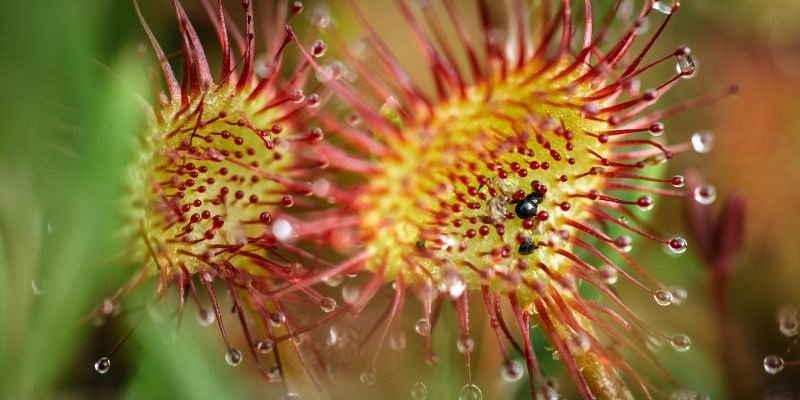
Yes, many plants do! Some of the reasons other than nutrients that plants can trap insects within them are: for helping with pollination, helping in seed formation, etc.
What is pollination?
Pollination is the process of transferring pollen to the female stigma of one flower from the male anther of another flower.
Pollination occurs between flowers of the same plant species. Any organism or element that helps in pollination is known as a pollinator. Insects are the most common pollinators for plants.
Carnivorous plants need pollination too! Surprisingly they do not consume the pollinator insects.
Fig plants and fig wasps are closely related. The fig tree needs the fig wasp to form seeds by pollination whereas the fig wasp needs to lay its eggs inside the fig fruit. They are mutually dependent on each other.
Even flowers like Ceropegias (“the deceptive flowers”) trap flies within them for 24 hours for pollination.

Better Your Child’s G.K. In 3 Minutes – Get This Free Newsletter
Get fun facts, simple and easy news, quizzes, and lots of other interesting things to read in your mailbox – for free! It’s what we call GK-on-the-go!
I Kid You Not now has a large readership across India and also parts of the world. If you want to write for us, you can submit your story here. You can also apply to become a news anchor. Apply here



Comments